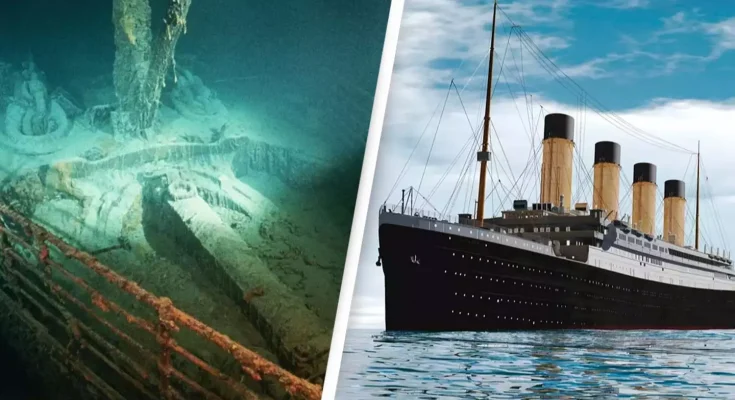HT4. People Shocked After Realizing Why There are No Skeletons on the Titanic
The sinking of the Titanic remains a haunting piece of history, and the absence of human remains at its shipwreck raises profound questions that continue to puzzle experts and onlookers today.
The lack of skeletons at the Titanic’s resting place has baffled many. Unlike other shipwrecks, where the remains of deceased individuals have been easy to find (and also existent), the absence of bodies from the Titanic raises intriguing queries. When the Titanic sank in 1912 after colliding with an iceberg, an estimated 1,517 people perished.1
The depth at which the Titanic lies is a key factor. Explorers and experts suggest that the immense depth of the wreck, approximately 3,800 meters below the ocean’s surface, plays a pivotal role in the absence of skeletons and bones.
Deep-sea explorer Robert Ballard sheds light on the mystery, explaining that the composition of seawater at such depths can dissolve bones due to being under-saturated in calcium carbonate, a major component of bones. In essence, the water absorbs the bones to help better distribute the rich calcium into the calcium-deficient ocean.
The discovery has surprised some, with many turning to Reddit to express shock and astonishment. The unique conditions of the ocean’s depths have led to a lack of skeletal remains, but they have preserved some artifacts, such as pairs of shoes, that show there were once human remains here, but no longer.2 However, that shouldn’t completely erase all evidence of skeletons entirely from the ocean floor.
Legal and Titanic-sized Ethical Debates
Legal disputes surrounding proposed expeditions to retrieve specific artifacts from the Titanic, such as its iconic radio equipment, have sparked debates. Concerns about disturbing potential human remains and violating the site’s sanctity as a memorial have arisen, fueling discussions and court battles. Is a memorial site a mass grave? Or do museums and those who study history have a right to the items buried nearly 4 kilometers below the surface?
Preserving the legacy of the Titanic, both as a historical artifact and a resting place for those lost in the tragedy, remains paramount. The debate revolves around striking a balance between scientific exploration and honoring the memory of the lives lost.
An additional angle is that some advocate for further investigation to potentially locate human remains and bring closure to families, while others argue that the site should be preserved as a memorial and left undisturbed out of respect for the deceased.
Technological limitations also add complexities to the exploration of the Titanic’s depths. Deep-sea explorations involve significant challenges, from navigating such deep waters to dealing with the harsh conditions that could affect any potential discovery. It is equally as difficult to procure any items found down there as it is to properly nail down whether or not we should.
Titanic’s Unanswered Questions
Despite various theories and speculations, why there are no skeletons on the Titanic remains somewhat unanswered.3 There could have been a violent storm during the sinking – dispersed life-jacketed passengers far from the wreckage, while others contend that remnants could still exist within the ship’s interiors.
Despite numerous theories and opinions, the fate of the Titanic’s missing bodies continues to perplex experts. While the calcium-lacking waters can attest to some disappearance, it doesn’t solve the whole equation. The allure of uncovering the truth competes with ethical considerations and the desire to maintain the sanctity of the shipwreck site.
As debates continue, the tragedy of the Titanic remains a reminder of the human cost of the disaster. Whether or not the mystery of the missing bodies is solved, the Titanic’s legacy endures as a testament to those who perished aboard the ill-fated ship.
